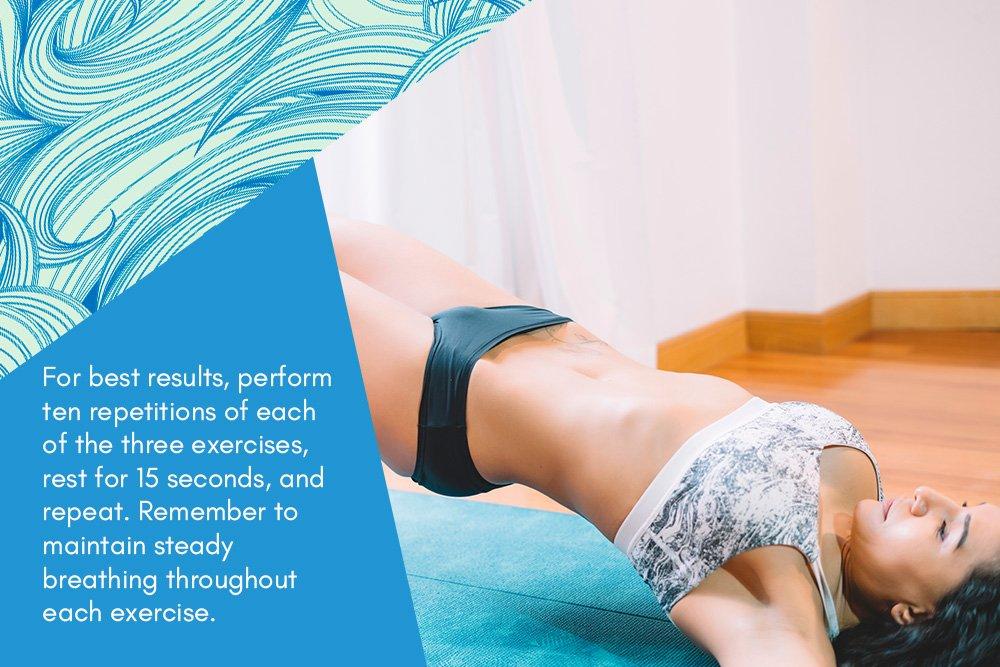
Urinary incontinence, meaning a lack of bladder control, can be inconvenient and often highly embarrassing as it can spring up at any time. While the loss of bladder control primarily affects middle-aged women, the condition is also prevalent in men and women of all ages. Because they are often uncomfortable even talking about their condition or believe nothing can be done, people often suffer in silence. They become afraid to engage in normal daily activities like shopping or dining out.
The pelvic floor muscles and the connective tissues that attach the muscles to the pelvis support the bladder and the intestines, and rectum in both men and women and the vagina, uterus, and cervix in women. These muscles are critical to bladder control and can become weakened for a variety of reasons. These include prostate issues and treatment thereof in men and pregnancy, childbirth, menopause, and hysterectomy surgery in women.
Lifestyle issues such as sitting for extended periods, repeated heavy lifting, and excessive body weight that places pressure on the abdomen can weaken the pelvic floor muscles. A host of underlying medical conditions such as endometriosis, interstitial cystitis, and irritable bowel syndrome can also result in a loss of bladder control. Sexual abuse as well as just the natural aging process, can all affect bladder control in both men and women.
Loss of bladder control can have far-reaching consequences and affect people’s psychological well-being and social life. The good news for both men and women who suffer from urinary incontinence is that there are ways to address the condition, including lifestyle changes, simple exercises, and non-invasive pelvic floor therapy like Emsella.
1) Dietary Modifications
Several dietary issues can impact the pelvic floor muscles, such as vitamin and mineral deficiency and caffeine and nicotine consumption.

• Magnesium is a critical mineral that is important for proper muscle and nerve function. A 40-person study at Israel’s Tel Aviv University found that over 50 percent of women who took magnesium supplements had improved bladder control, including not getting up as often during the night. Some doctors believe magnesium may reduce pelvic muscle spasms resulting in the bladder being able to empty more fully. Besides taking supplements, adding magnesium-rich foods like potatoes, corn, and bananas to your diet may help. Just be sure to check with your healthcare provider before you begin taking any supplements.
• Vitamin D is needed for maintaining strong muscles as well as bones and bolstering the immune system. The body produces most vitamin D in response to sunlight. However, some foods contain vitamin D, such as milk.
• Caffeine is a big no-no for people with bladder issues and provides a triple whammy. First, it is a diuretic, so it increases your need to urinate. Secondly, it is a stimulant, so it affects brain function, which, in turn, can result in bladder excitement and a loss of control. Thirdly, it can cause bladder irritation as well as stimulate muscle contractions.
• For anyone who needs yet another reason to give up the cancer sticks, the nicotine in cigarettes can irritate the bladder, and giving up smoking has been referred to as the “antidote to incontinence.” A study at the Aristotelian University of Thessaloniki in Greece found heavy smokers are more prone to incontinence than nonsmokers. Additionally, smoking tends to cause coughing, and chronic coughing has been linked to causing weakened pelvic floor muscles.
2) Weight Loss

The Urinary Care Foundation states that obesity is a well-established yet modifiable risk factor for urinary incontinence. A study of 338 overweight women having at least ten urinary-incontinence episodes per week engaged in a six-month intensive weight-loss program. Women who had a mean weight loss of just eight percent saw their incontinence episodes decrease by almost half, or 47 percent. Furthermore, the study showed women who lost at least five percent of their total body mass had fewer bladder control episodes over a three-year period than those who lost less weight.
3) Pelvic Exercises
Most people think of Kegel exercises as synonymous with strengthening the vaginal muscles. However, these exercises that strengthen pelvic floor muscles can help increase bladder control and have a host of other benefits for both men and women, including increased sexual performance and enjoyment. Here are four quick and easy exercises geared especially to targeting the pelvic-floor muscles:

I.) Quick Flick Kegels
• Lie with your feet flat on the floor with the knees bent.
• Exhale and pull your navel inwards towards your spine.
• Quickly contract the pelvic muscles and hold for one second before releasing.
• Repeat ten times.
II.) Heel Slides
• Lie with your feet flat on the floor with the knees bent and your pelvis in the neutral position.
• Exhale through your mouth and let your ribs naturally compress.
• Contract your core muscles, lift your pelvis off the floor and slide your right heel along the floor away from you as far as possible without losing the contraction in your core muscles.
• Inhale and bring your leg back to the starting position.
• Perform ten repetitions and repeat with the other leg.
III.) Marches
These are also called toe taps.
• Lie on the floor with your knees bent and your pelvis in the neutral position.
• Exhale through your mouth and allow your ribs to compress naturally.
• Lock in your core muscles, lift your pelvis off the floor and draw one knee up until your thigh is vertical.
• Slowly return the leg to the starting position.
• Be sure your core remains engaged throughout the entire exercise.
• Alternate legs for a total of 20 total repetitions.
VI.) Deep Breathing
Deep, or diaphragmatic, breathing increases strength between the diaphragm and pelvic floor.
• Lie flat on the floor or assume a seated position.
• Release the tension in your body.
• Place one hand on your chest and the other on your stomach.
• While trying to keep your chest still, inhale from your diaphragm for two to three seconds and then slowly exhale.
• Repeat ten times.
For best results, perform ten repetitions of each of the three exercises, rest for 15 seconds, and repeat. Remember to maintain steady breathing throughout each exercise.

4) Emsella
Emsella is a non-surgical, non-invasive, and highly effective therapy for increasing bladder control that strengthens pelvic floor muscles by using harmless high-intensity focused electromagnetic energy. The Emsella-treatment protocol works by simulating 11,000 supramaximal muscle contractions of the pelvic floor in just one 30-minute session. The pelvic floor therapy device is shown to be effective in over ninety percent of incontinence patients. It has been approved by the U.S. Food and Drug Administration for the treatment of loss of bladder control. Many patients reported improvement after just one treatment.
Urinary incontinence can affect men and women of all ages. However, there are multiple non-surgical treatment options available to improve your symptoms and allow you to reclaim control of your life. The staff at Be Still Float Studio is committed to helping you improve the quality of your life. We are located at 1050 Riverside Ave in Jacksonville, Florida, and offer Emsella-pelvic therapy for men and women as well as a variety of other wellness treatments. Contact us today by calling 904-593-2844 or see us online at bestillfloat.com.













